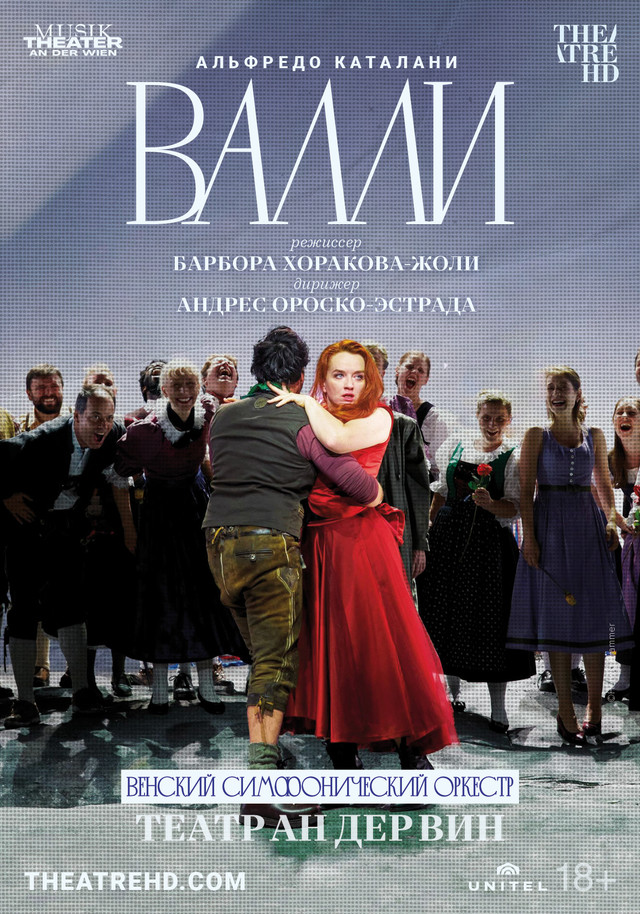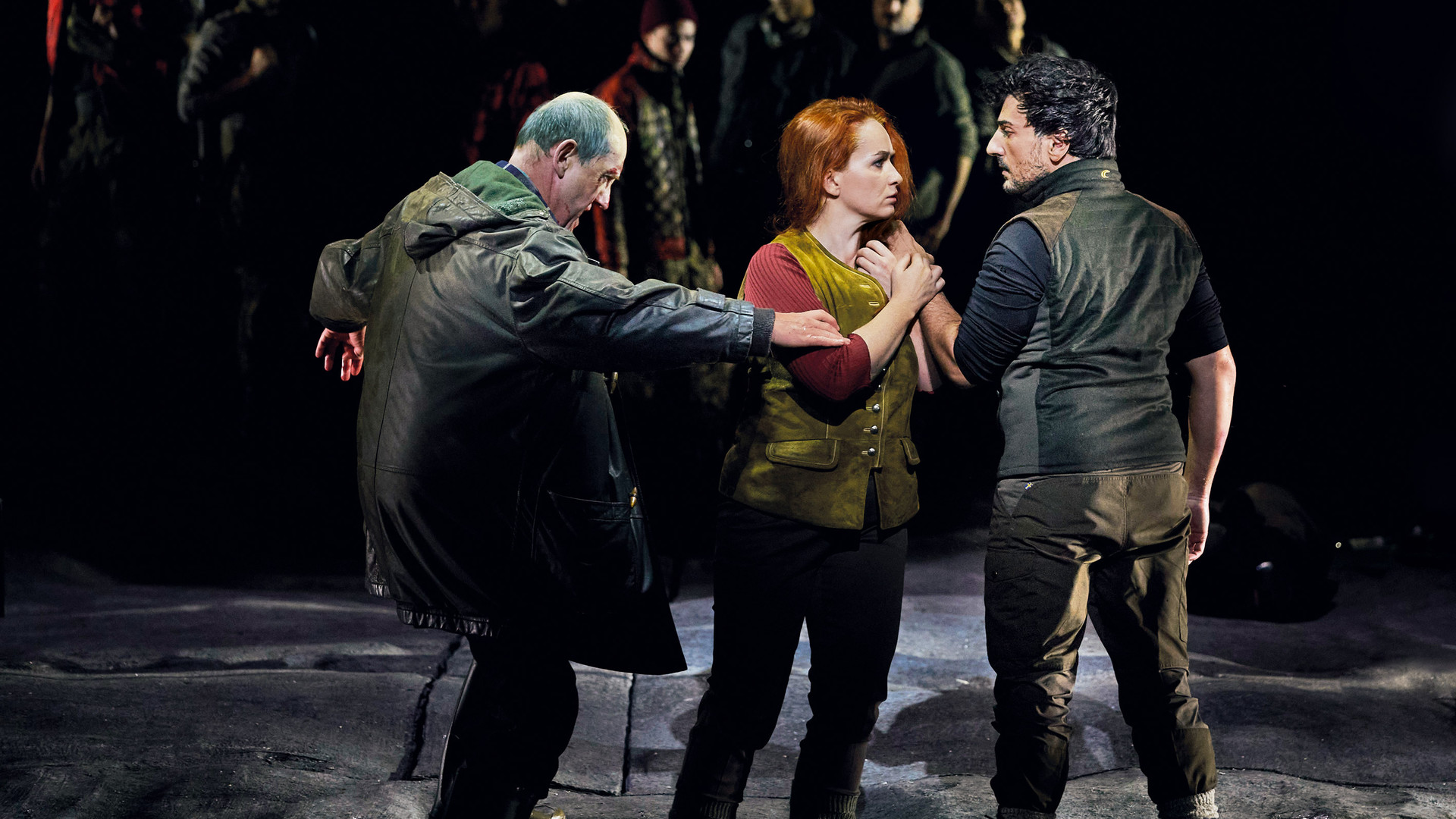Аn der Wien: La Wally
Year: 2021
Country: Austria
Director: Barbora Horáková Joly
Conductor: Andrés Orozco-Estrada
Set and costume designer: Eva-Maria Van Acker
Cast: Izabela Matula, Leonardo Capalbo, Jacques Imbrailo, Ilona Revolskaya, Alastair Miles, Zoltán Nagy, Sofia Vinnik
Genre: opera
Runtime: 135 min.
Age: 18+
Country: Austria
Director: Barbora Horáková Joly
Conductor: Andrés Orozco-Estrada
Set and costume designer: Eva-Maria Van Acker
Cast: Izabela Matula, Leonardo Capalbo, Jacques Imbrailo, Ilona Revolskaya, Alastair Miles, Zoltán Nagy, Sofia Vinnik
Genre: opera
Runtime: 135 min.
Age: 18+
Fatal love amidst the impending, uncontrollable Alps
Alfredo Catalani chose highly unusual material for his opera: the successful novel Die Geier-Wally (1873) by Wilhelmine von Hillern tells the story of a young woman who does not fit any of the gender clichés of the time and whose only friend is a tame vulture. Raised like a boy by her father, Wally is strong and uncompromising and is unable to obey her father when he wants to marry her to a man she does not love. Unlike many earlier operatic heroines commanded to marry against their will, Wally does not look for a solution in society, but instead runs away to the crags and ravines of the mountains. Her husband must be her equal, someone unafraid to face both a bear and her father. Hagenbach is the opposite of the elderly Stromminger: initially arrogant he then proves to be a true friend to Afra and a man who can love a woman like Wally. But whereas a couple like this can appear in a novel in around 1892, it is not possible in an opera. Any hope of happiness is dashed by the forces of nature so that the final chord can resonate with monumental tragedy. First performed on 20 January 1892 at La Scala in Milan, the opera is often classified as verismo. Catalani, however, was inspired more by Wagner, German Romanticism and the operas of his contemporary Massenet. Great attention is paid to the orchestra, which is given nuanced harmonies and colourful instrumentation: the score includes leitmotifs but almost no fixed demarcation of numbers and virtually no arias, only Wally’s “Ebben, ne andrò lontano”. Catalani wrote the title role for the Romanian soprano Hariclea Darclée, famed at the time as the “Carpathian nightingale”. She was also Puccini’s first Tosca. Catalani was not interested in evoking the Tyrolean mountains with his music: naturalistic elements such as the rustic waltz in the kissing dance scene are always executed in keeping with the characters’ circumstances. For that reason the music does not portray any genre scenes, but rather emotional processes. Only the edelweiss song at the beginning creates local colour. The zither player Walter, who sings the song first even though it was written by Wally, serves as her poetic alter ego. He embodies what she suppresses: the language of love, art, light-heartedness and femininity. Sadly, Wally’s original friend, the vulture, was replaced by Walter during the adaptation of the novel as an opera libretto.

